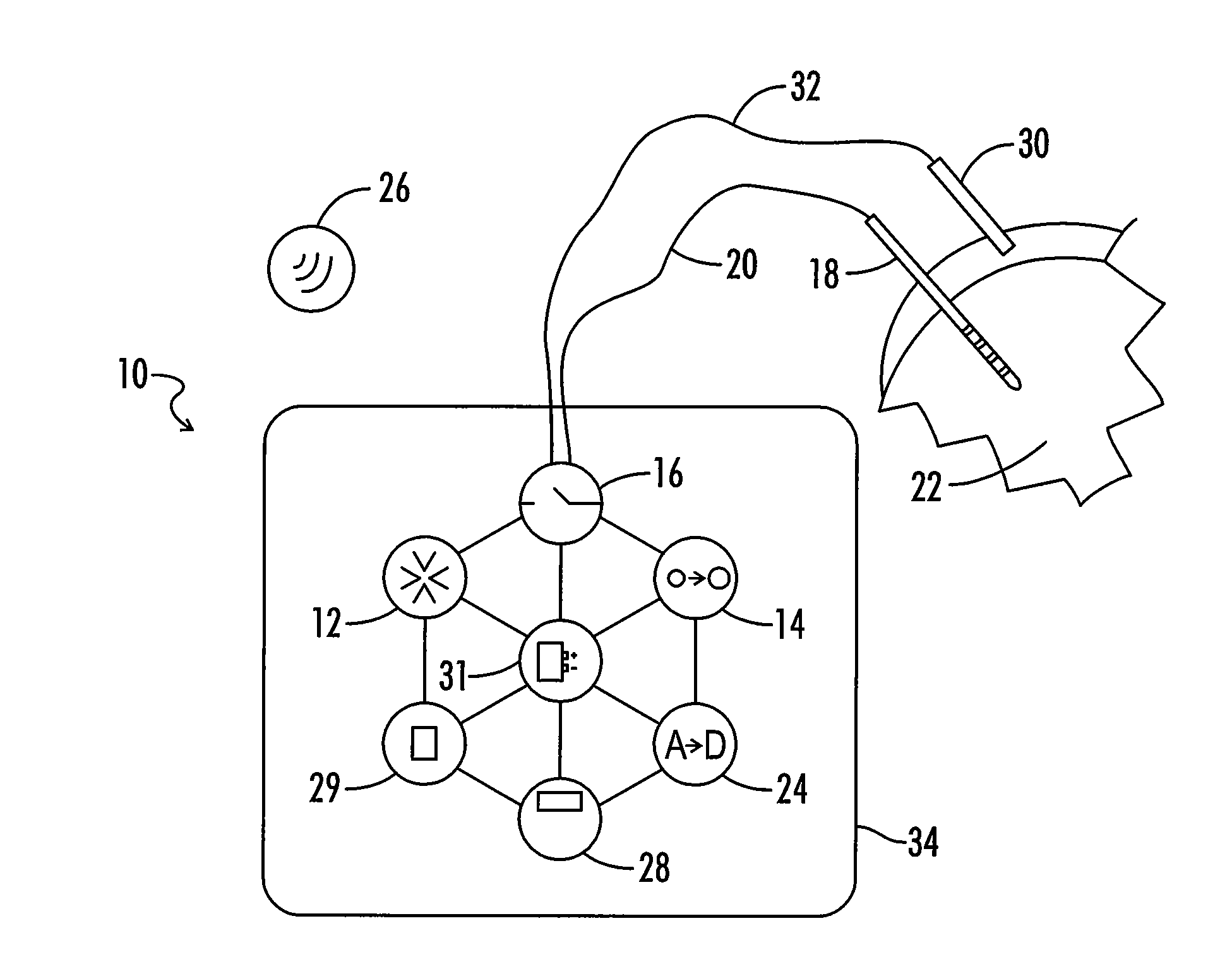Device for treating parkinson's disease and methods of use thereof
a parkinson's disease and device technology, applied in the field of parkinson's disease devices, can solve the problems that no pharmaceutical, biologic, procedure, or device has been proven to slow the relentless progression, and achieve the effect of removing the negative effects of over-stimulation
- Summary
- Abstract
- Description
- Claims
- Application Information
AI Technical Summary
Benefits of technology
Problems solved by technology
Method used
Image
Examples
example 1
Obtaining an STN / SN Ratio
[0076]The following is an example of how STN / SN ratios were determined for eighteen age and sex matched subjects. The examples provide an understanding of the spectrum of STN / SN ratios that exist in subjects. The ages of the subjects range from 52 to 66 years old. The subjects were separated into an early Parkinson's Disease group and an advanced Parkinson's Disease group. Accordingly, the result was 9 subjects in the early Parkinson's Disease group and 9 subjects in the advanced Parkinson's Disease group. Figures relevant to these examples are FIGS. 11-14. The definition of a subject in the early Parkinson's Disease group is a subject that is 50 years old or older, that is within two years of the Parkinson's Disease diagnosis. The subjects in the advanced Parkinson's Disease group are medication-resistant following years of drug therapy, are 50 years old or older, and had an initial diagnosis of Parkinson's Disease 7-10 years ago. In order to obtain recordi...
example 2
Correlating the STN / SN Ratio to Known Information
[0079]Referring now to FIGS. 11 and 12, there are shown the STN / SN ratios for the left hemisphere and right hemisphere along with the UPDRS values for each human subject. FIG. 11 shows the results for the early Parkinson's Disease group. FIG. 12 shows the results for the advanced Parkinson's Disease group. Those of skill in the art understand that the UPDRS values are considered the “gold standard” regarding the status of the subject's Parkinson's Disease. The Figures include additional information such as the subject's L-dopamine test results. The UPDRS values and ratios of each subject are shown.
example 3
Utilization of the STN / SN Ratio
[0080]Review and analysis of the UPDRS values and the ratios reveals a relationship between the two which may be used to confirm a medical diagnosis of Parkinson's Disease. Confirmation of a medical diagnosis for Parkinson's Disease will prohibit a subject from undergoing medical procedures for that disease if the ratio does not confirm the existence of Parkinson's Disease. In the data provided herein, note that the higher ratio values correspond to the UPDRS values indicative of an advanced stage of Parkinson's Disease. Based upon the data provided, a STN / SN ratio of 2.5 or higher is indicative of advanced stage Parkinson's Disease. Referring now to FIGS. 13 and 14, there is shown the same data as displayed in FIGS. 11 and 12, however, it is shown in the form of bar graphs. Note that FIG. 13 shows the LSTN data and FIG. 14 shows the RSTN data. For each listed age, the bar graph on the left indicates the ratio for the early Parkinson's Disease subject ...
PUM
 Login to View More
Login to View More Abstract
Description
Claims
Application Information
 Login to View More
Login to View More - R&D
- Intellectual Property
- Life Sciences
- Materials
- Tech Scout
- Unparalleled Data Quality
- Higher Quality Content
- 60% Fewer Hallucinations
Browse by: Latest US Patents, China's latest patents, Technical Efficacy Thesaurus, Application Domain, Technology Topic, Popular Technical Reports.
© 2025 PatSnap. All rights reserved.Legal|Privacy policy|Modern Slavery Act Transparency Statement|Sitemap|About US| Contact US: help@patsnap.com



